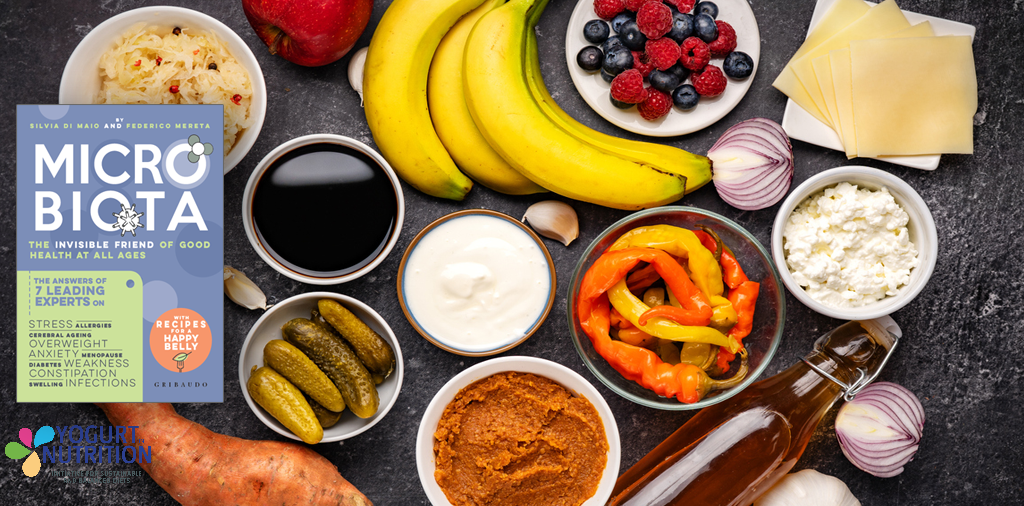Over the last decades, industrialization has radically changed our way of life and eating habits. The time devoted to food preparation has been significantly reduced, resulting in a greater consumption of processed foods and ready-made meals. This diet may have an impact on the gut microbiota and in this context, specific micronutrients are of great interest. What are their effects on the microbiota and where can we find them?
Omega-3 and polyphenols: allies for the gut microbiota?
Omega-3s are a family of essential fatty acids that play important roles in our body and may provide a number of health benefits. The three most important types are ALA (alpha-linolenic acid), DHA (docosahexaenoic acid), and EPA (eicosapentaenoic acid). They are known specially to have anti-inflammatory properties. This function is not only exercised at the cellular level, but also through direct interaction with the intestinal microbiota. The administration of adequate doses of omega-3 fatty acids seems to provoke an increase of the bacteria’s populations whose metabolism produces short-chain fatty acids (SCFA), with a consequent anti-inflammatory potential for the intestinal mucosa.
Polyphenols are naturally occurring organic molecules, generally classified as flavonoids, tannins, lignin or anthraquinones, found in many foods, such as fruits, vegetables, cocoa, tea, coffee, cereals, or seeds. They are known for their anti-microbial, anti-oxidant and anti-inflammatory properties. Yet their beneficial effects on the body depend on their bioavailability, i.e., how efficiently our body is able to absorb them. Many of these compounds cannot cross the intestinal barrier and are therefore not absorbed. In the colon, however, polyphenols interact bidirectionally with the intestinal microbiota. It allows their biotransformation into active metabolites, able to modulate the microbiota itself, determining structural and functional changes.
Eco-friendly functional food for better health
Omega 3 or polyphenols are just examples of micro-nutrients with potential effects on the microbiota. They illustrate how some molecules can interact with the gut microbiota and the host’s health. The consumption of some foods, either modified by human intervention to “improve” their functionality, or containing naturally some interesting component, may be a way to bring exert beneficial actions on health. For example:
- Beta-glucans from oats as part of a meal contributes to the reduction of the blood glucose rise after that meal
- Walnuts, almonds, cashews and pistachios contain monounsaturated fatty acids, which have been shown to lower/reduce blood cholesterol. High cholesterol is a risk factor in the development of coronary heart disease.
- Phytochemicals naturally present in soybeans, such as isoflavones and genistein, may contribute to the cholesterol homeostasis.
The food of the future is not only functional, but also eco-sustainable, to meet the challenges of the coming years. For example, microalgae are valuable natural sources of bioactive compounds such as vitamins, essential amino acids, polyunsaturated fatty acids, minerals, carotenoids, enzymes and fiber. Their added value lies in the fact that they are highly eco-sustainable. They are therefore very good candidates as functional ingredients to improve the nutritional value of foods.
Microbiota-directed-food for tomorrow’s medicine?
The future goal is the development of microbiota-directed foods (MDFs); specifically designed to improve gut health and selectively promote the growth of beneficial bacteria. Acting on the microbiota through diet and thus promoting its balance could be a possible way to treat chronic inflammatory diseases related to gut dysbiosis.
The nutrition of the future will have to be personalized and adapted on the basis of dynamic changes in the gut microbiota. The future “microbiota-targeted diet” will be part of a much broader vision of individual health management, taking in account the multifactorial etiology of dysbiosis.
Some probiotic bacteria of interest
Some bacteria are known to be beneficial to us, and are used for the fermentation of foods and as probiotics:
- Streptococcus thermophilus is an old friend of ours. Its physiological, biological and technological characteristics make it particularly suitable for development in milk.
- Lactobacillus is a genus of bacteria which includes, for example, L. delbrueckii, or L. lactis. These bacteria are called “bacilli” due to their shape which recalls that of a rod. Streptococcus thermophilus and Lactobacillus delbrueckii subsp. bulgaricus are the two traditional ferments found in the yogurt. During the fermentation, they will convert the milk sugar (lactose) into lactic acid. This process has been demonstrated to improve lactose digestion (EFSA 2010b).
- Bifidobacterium is a genus of bacteria of great interest as probiotics; they are normally part of our gut microbiota, where they can reach very high concentrations.
Other micro-organisms of the microbiota are becoming increasingly popular with scientists:
- Faecalibacterium prausnitzii is one of the most abundant species in our gastrointestinal tract. In addition to being particularly abundant, it is also known for its potential role in promoting intestinal health. F. prausnitzii is also considered one of the major producers of butyrate, a short-chain fatty acid with benefits and effects for our health
- Akkermansia muciniphila has only recently “gained popularity”. They are able to grow on gastric mucins.
- Archaea constitute one of living organisms along with eukaryotes (yeast) and bacteria. No probiotics currently belong to the archaea domain. However, there are no known human pathogens among the archaea, many of them live in close contact with humans and some of them are already naturally present in our gastrointestinal tract. These characteristics make some archaea likely to be studied as potential probiotics.
This post is written on the basis of the book “Microbiota”.
“Microbiota” is published in english by the Danone Institute Italy and Danone Institute International. It gathers a mix of historical, anthropological and scientific concepts explaining why research on gut bacteria, from ancient texts to the most recent scientific evidence, is a sector of great interest for science. Thanks to a Q&A structure, 7 recognized experts explain several topics considering the different ages and conditions in life. The book is available in pdf and e-book format (on the Danone Institute International website)



